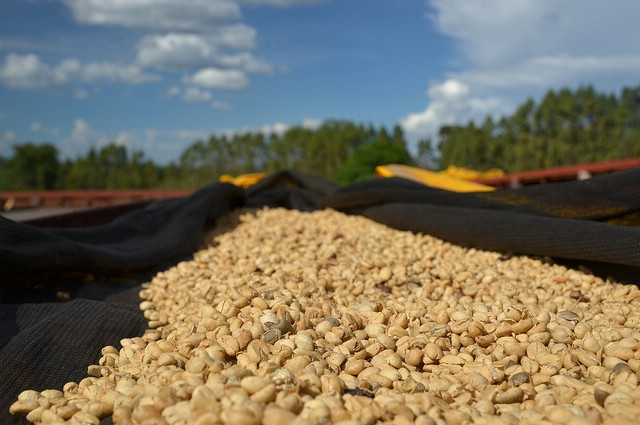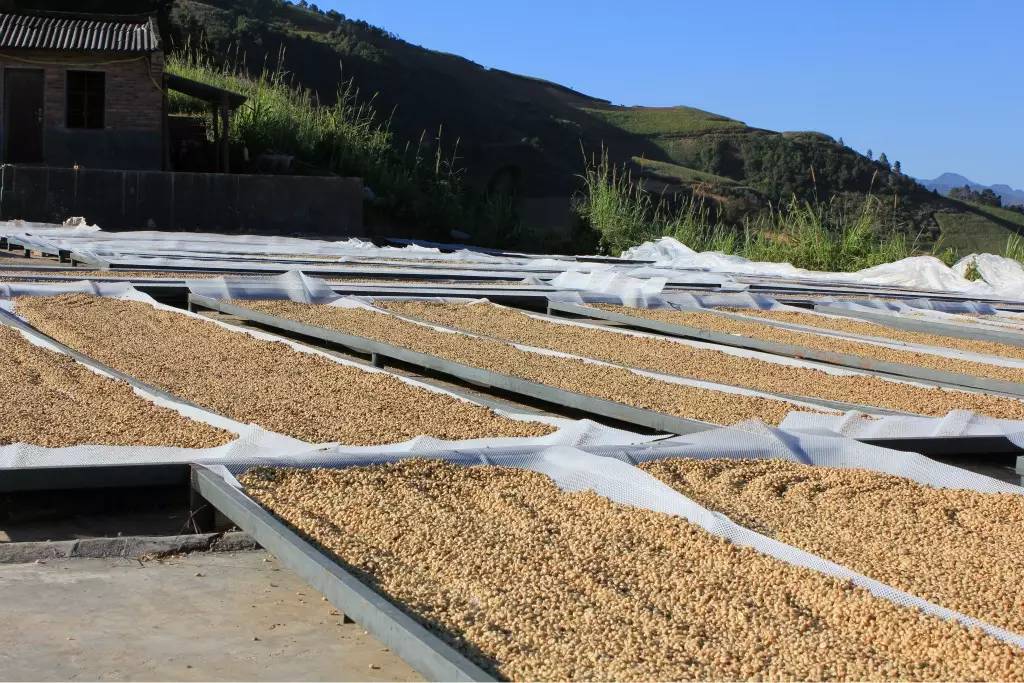How to buy coffee beans Ethiopian sun-dried jaga Feijia snow coffee G1 sugar-free boutique coffee
Ethiopia's Yirgacheffe coffee is petite, but gentle and sweet. As the home of coffee, Ethiopia's millennia of growing and processing traditions have resulted in high-quality washed Arabica beans. Light baked with unique lemon, floral and honey sweet aromas, soft fruit acids and citrus notes, fresh and bright taste. No milk, no sugar, let the rich texture and unique soft floral brush your taste buds, leaving endless aftertaste…
Yegashefi is a small town, 700- 21,000 meters above sea level, synonymous with Ethiopian fine coffee. It is a wetland since ancient times, and the old saying "Yirga" means "settle down" and "Cheffe" means "wetland". The way coffee is produced and the flavor is so prominent that Ethiopian coffee farmers compete to be proud of their coffee with Yegashfi flavor, which has become Africa's most famous coffee producing area.
At first, the coffee trees in Yegashefi were planted by European monks, but later by farmers or cooperatives. Yegashefi is actually formed by surrounding coffee communities or cooperatives, which generally include: Hafusa, Hama, and Biloa.
These mountain villages are foggy, spring all year round, cool but not hot in summer, rain but not damp in winter, and they breed unique regional flavors of citrus and flowers. Coffee trees are grown mostly in farmers 'backyards or mixed with other crops on the farm.
Yegashefi is produced at the Kebel Aricha processing plant, near which there are about 650-700 small coffee farmers who send ripe coffee berries for processing and cash. After the processing plant selects the available berries, they are placed directly on the shelf and exposed to the sun. They will be turned every 2-3 hours for the first few days to prevent excessive fermentation. After four to six weeks of sun exposure, depending on the weather and temperature, workers will remove the outer layer of pulp by machine and transport it to addis for storage. Sun-treated beans are usually stored in the form of shelled beans, which are not shelled until they are exported to ensure the quality of raw beans. This batch of sun-cured Arica is rated G1 by ECX, the highest rating. From green bean appearance, consistency, freshness to dry aroma and flavor, it is excellent. You can't miss it if you like bright acidity and strong berry flavor!
Flavor description: Light fermented wine aroma, dates, sweet orange tones, dark berry, lychee, carambola, peach, peach, longan, dates, honey sweet, cocoa with a little spice, body thick and lasting finish
About Project Origin
Sasa Sestic, winner of the 2015 World Barista Competition, started a green bean shopping project called Project Origin three years ago with his business team ONA Coffee. The project works directly with coffee farmers in poor countries and regions to improve their production conditions and pay them 20% above fair trade prices.
The project also aims to strengthen the relationship between roasters and coffee farmers and to guide coffee farmers to grow high-quality coffee beans. So far, Sasa has established relationships with coffee growers from eight countries, including Brazil, Panama, India, Ethiopia, El Salvador and Costa Rica.
Country: Ethiopia Fiscal year: 2003
Grade: G1
Production area: Gediyo
Altitude: 1900-2100 m
Treatment: Sunlight
Breed: Native species
Produced by Kebel Aricha
Flavor: Light fermented bouquet, sweet orange, spice, sweet honey

Important Notice :
前街咖啡 FrontStreet Coffee has moved to new addredd:
FrontStreet Coffee Address: 315,Donghua East Road,GuangZhou
Tel:020 38364473
- Prev

Introduction of boutique coffee beans-- Colombian coffee with unique Colombian flavor
There are two series of coffee in the world, one is the hard coffee represented by Brazil, which has a strong flavor, and the other is the soft coffee represented by Colombia, which has a light flavor. The difference lies in the altitude of the producing area and the method of planting. Coffee is planted extensively in hilly red soil in Brazil and intensive cultivation in mountain black soil in Colombia. The Colombian super aroma is full-bodied and thick, with clear excellence.
- Next

How to buy Coffee beans China Coffee Network recommends Ethiopia's Sidamo Sun treatment Lion King
Although the Ethiopian Yirgacheffe coffee is petite, it is gentle and delicate and sweet. As the hometown of coffee, thousands of years of planting history and processing tradition in Ethiopia have created high-quality washed Arabica beans. Light baking has unique sweet aromas of lemon, flowers and honey, soft acidity and citrus flavors, fresh and bright on the palate. No.
Related
- Detailed explanation of Jadeite planting Land in Panamanian Jadeite Manor introduction to the grading system of Jadeite competitive bidding, Red bid, Green bid and Rose Summer
- Story of Coffee planting in Brenka region of Costa Rica Stonehenge Manor anaerobic heavy honey treatment of flavor mouth
- What's on the barrel of Blue Mountain Coffee beans?
- Can American coffee also pull flowers? How to use hot American style to pull out a good-looking pattern?
- Can you make a cold extract with coffee beans? What is the right proportion for cold-extracted coffee formula?
- Indonesian PWN Gold Mandrine Coffee Origin Features Flavor How to Chong? Mandolin coffee is American.
- A brief introduction to the flavor characteristics of Brazilian yellow bourbon coffee beans
- What is the effect of different water quality on the flavor of cold-extracted coffee? What kind of water is best for brewing coffee?
- Why do you think of Rose Summer whenever you mention Panamanian coffee?
- Introduction to the characteristics of authentic blue mountain coffee bean producing areas? What is the CIB Coffee Authority in Jamaica?

